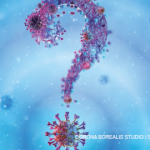Dr. Semmelweis concluded the medical students must be carrying cadaverous particles on their hands, which they subsequently brought with them to the maternity wards. These cadaverous particles induced puerperal fever in their patients. He came to this conclusion over a decade before Louis Pasteur proposed his germ theory of disease, in which microorganisms were found to be the cause of puerperal fever.10 Dr. Semmelweis had no proof these microorganisms existed. He concluded they must exist through his application of Škoda’s method of exclusion, which left no other possibility.
Beyond Exclusion
Michael Putman, MD, and Anisha Dua, MD, MPH, argue that enough is enough.
In their recent editorial, titled “There Is No Diagnosis of Exclusion in Rheumatology,” they aver:11
Like other ‘pseudo-probabilistic aphorisms,’ the phrase ‘diagnosis of exclusion’ suggests a preceding thoughtful diagnostic evaluation … . But should it? In our experience, a ‘diagnosis of exclusion’ is subjective and conditional, which misaligns it with principles of diagnostic reasoning, resulting in unnecessary testing and premature closure … . Such lists are subjective because a list of exclusions depends upon a combination of prior experience, cognitive dispositions, and physician biases, which vary greatly from rheumatologist to rheumatologist. They are conditional because they depend upon the patient’s presentation … . Even in cases where the ‘diagnosis of exclusion’ framework has resulted in an adequate workup, it closes the imagination to reasonable future possibilities.
They have a point. I think the main problem with diagnoses of exclusion, however, lies less with the concept and more with its sloppy use.
When I was a medical student, I owned a pocket book called Differential Diagnosis. For every chief complaint, the book had a list of diagnoses that needed to be considered, which I dutifully copied into my admission note, along with a brief statement as to how each diagnosis was excluded.
Dr. Škoda would have been horrified.
For him, his method of exclusion was not a Gedankenexperiment; diagnoses needed to be made at the bedside, supported by a scrupulous examination of the patient, rather than by reviewing a checklist of possibilities. Also, because making a clinical diagnosis is fraught, a diagnosis of exclusion must always be treated as a hypothesis, rather than the last word. In its ideal form, the method of exclusion opens the imagination to less common possibilities, like the existence of a hypothetical particle that medical students carried from the morgue to the obstetrical wards.


